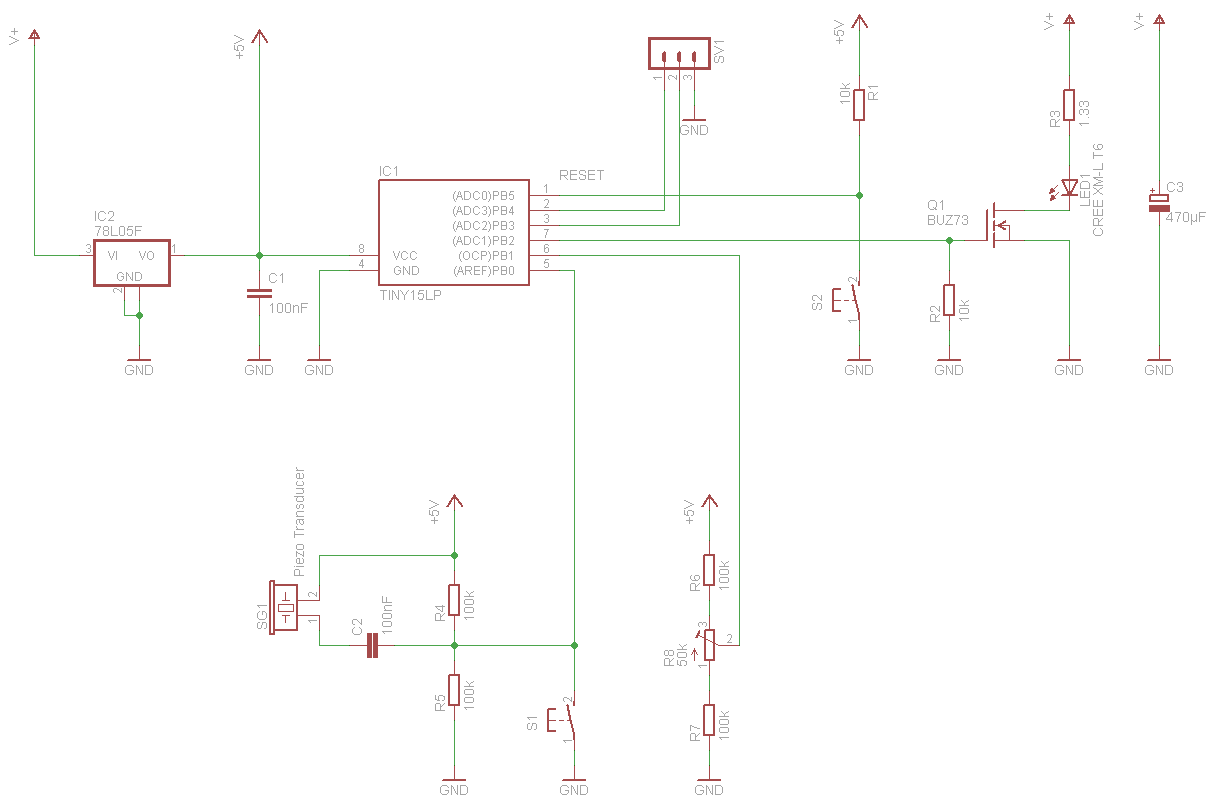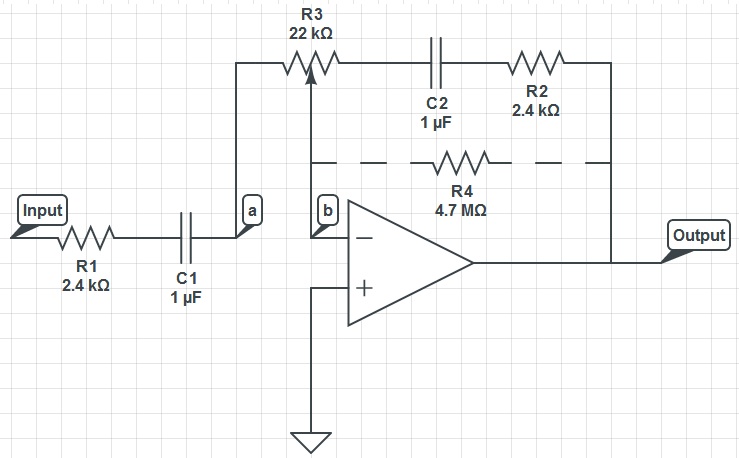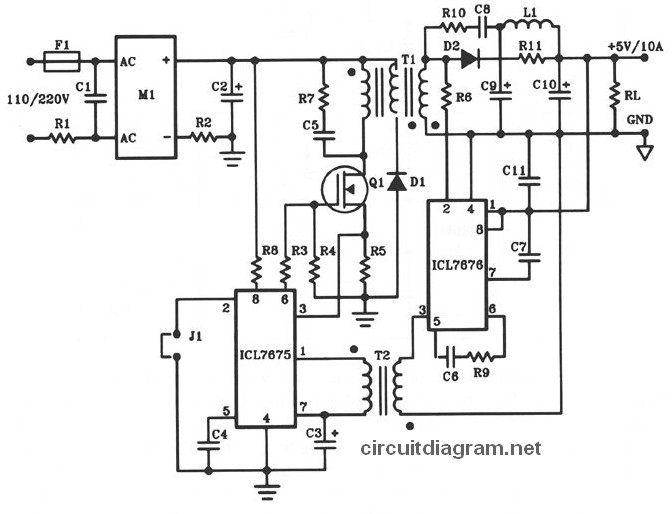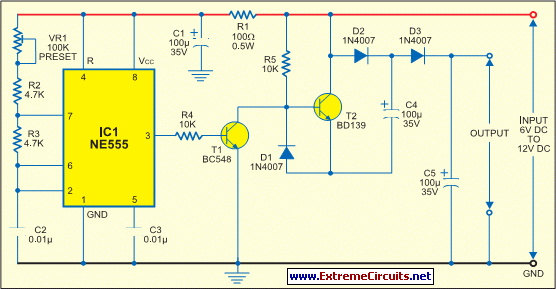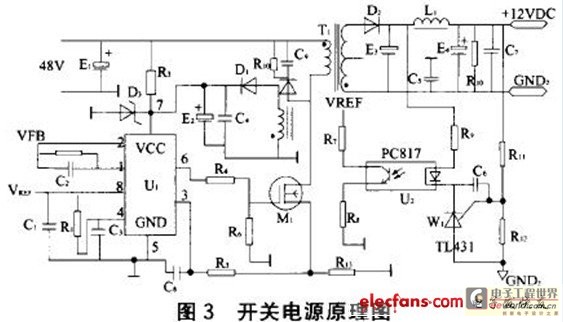
LTC1436ACGN-PLL High Efficiency Low Noise Synchronous Step-Down Switching Regulators
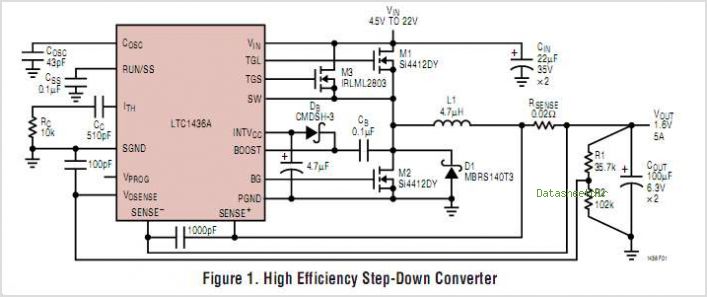
In broadband networking and high-speed computing applications, multiple high-current, low-voltage power supplies are required to power FPGAs, flash memory, DSPs, and microprocessors. One example specifies a maximum current of 60A to power the CPU at 1.5V and up to 15A to power the memory at 2.5V from a 12V input. While customized DC/DC modules are typically expensive, the additional external circuitry required for synchronization further increases the cost of individual supplies. The newly released LTC® 1628-SYNC PolyPhase™ controller can provide a simple and cost-effective solution. Compared to the LTC1628, the LTC1628-SYNC includes a PLLIN pin that allows for external synchronization. By combining the LTC1628-SYNC with the LTC1629, a true 3-phase circuit can be achieved for the 60A CPU supply, while the second output of the LTC1628-SYNC circuit can be utilized to generate the memory power supply. The channel used for the memory power is interleaved out of phase with the other three channels used for CPU power, which further reduces the net ripple current seen by the input bus. Additionally, the LTC1629’s differential amplifier enables true remote sensing to ensure accurate voltage regulation at the CPU supply pins.
The LTC1628-SYNC PolyPhase controller is designed specifically for applications requiring efficient power management in environments where high current and low voltage are crucial. The integration of external synchronization capabilities via the PLLIN pin allows for precise timing control across multiple power supply outputs, which is essential in high-performance computing applications.
When configuring the LTC1628-SYNC with the LTC1629, the design achieves a robust 3-phase power supply system capable of delivering up to 60A at 1.5V for the CPU. The interleaving of the memory power channel at 2.5V, which operates out of phase with the CPU channels, is a significant design feature that minimizes ripple current. This is particularly important as ripple can adversely affect the performance of sensitive components such as FPGAs and DSPs.
The LTC1629's differential amplifier function enhances the power supply's performance by allowing remote sensing of the voltage at the CPU pins. This feature ensures that voltage drops due to line resistance do not affect the voltage supplied to the CPU, thereby maintaining optimal operating conditions and improving reliability.
Overall, the combination of the LTC1628-SYNC and LTC1629 offers a highly efficient, cost-effective solution for power management in advanced computing systems, ensuring that power supplies can meet the demanding requirements of modern electronic devices without incurring excessive costs or complexity.In Broadband networking and high speed computing applications, multiple high current, low voltage power supplies are needed to power FPGAs Flash memory, DSPs and Microprocessors One such example calls for a maximum of 60A of current to power the CPU at 1. 5V and up to 15A to power the memory at 2. 5V from a 12V input. While a customized DC/DC module is usually expensive, the external circuitry for synchronization further increases the cost of individual supplies. The newly released LTC ® 1628-SYNC PolyPhase TM con- troller CAN provide a simple and low cost solution.
Com- pared to the LTC1628 the LTC1628-SYNC has a PLLIN pin that enables external synchronization. By combining the LTC1628-SYNC with the LTC1629 a true 3-phase circuit CAN be achieved for the 60A CPU supply and the second output of the LTC1628-SYNC circuit CAN be used to generate the memory power supply. Because the channel used for the memory power is interleaved out of phase from the other three channels used for CPU power, the net ripple current seen by the input bus is further reduced.
In addition, the LTC1629 ½ ½s Differential Amplifier enables true remote sensing to ensure accurate voltage regulation at the CPU supply pins. 🔗 External reference
The LTC1628-SYNC PolyPhase controller is designed specifically for applications requiring efficient power management in environments where high current and low voltage are crucial. The integration of external synchronization capabilities via the PLLIN pin allows for precise timing control across multiple power supply outputs, which is essential in high-performance computing applications.
When configuring the LTC1628-SYNC with the LTC1629, the design achieves a robust 3-phase power supply system capable of delivering up to 60A at 1.5V for the CPU. The interleaving of the memory power channel at 2.5V, which operates out of phase with the CPU channels, is a significant design feature that minimizes ripple current. This is particularly important as ripple can adversely affect the performance of sensitive components such as FPGAs and DSPs.
The LTC1629's differential amplifier function enhances the power supply's performance by allowing remote sensing of the voltage at the CPU pins. This feature ensures that voltage drops due to line resistance do not affect the voltage supplied to the CPU, thereby maintaining optimal operating conditions and improving reliability.
Overall, the combination of the LTC1628-SYNC and LTC1629 offers a highly efficient, cost-effective solution for power management in advanced computing systems, ensuring that power supplies can meet the demanding requirements of modern electronic devices without incurring excessive costs or complexity.In Broadband networking and high speed computing applications, multiple high current, low voltage power supplies are needed to power FPGAs Flash memory, DSPs and Microprocessors One such example calls for a maximum of 60A of current to power the CPU at 1. 5V and up to 15A to power the memory at 2. 5V from a 12V input. While a customized DC/DC module is usually expensive, the external circuitry for synchronization further increases the cost of individual supplies. The newly released LTC ® 1628-SYNC PolyPhase TM con- troller CAN provide a simple and low cost solution.
Com- pared to the LTC1628 the LTC1628-SYNC has a PLLIN pin that enables external synchronization. By combining the LTC1628-SYNC with the LTC1629 a true 3-phase circuit CAN be achieved for the 60A CPU supply and the second output of the LTC1628-SYNC circuit CAN be used to generate the memory power supply. Because the channel used for the memory power is interleaved out of phase from the other three channels used for CPU power, the net ripple current seen by the input bus is further reduced.
In addition, the LTC1629 ½ ½s Differential Amplifier enables true remote sensing to ensure accurate voltage regulation at the CPU supply pins. 🔗 External reference
Warning: include(partials/cookie-banner.php): Failed to open stream: Permission denied in /var/www/html/nextgr/view-circuit.php on line 713
Warning: include(): Failed opening 'partials/cookie-banner.php' for inclusion (include_path='.:/usr/share/php') in /var/www/html/nextgr/view-circuit.php on line 713
